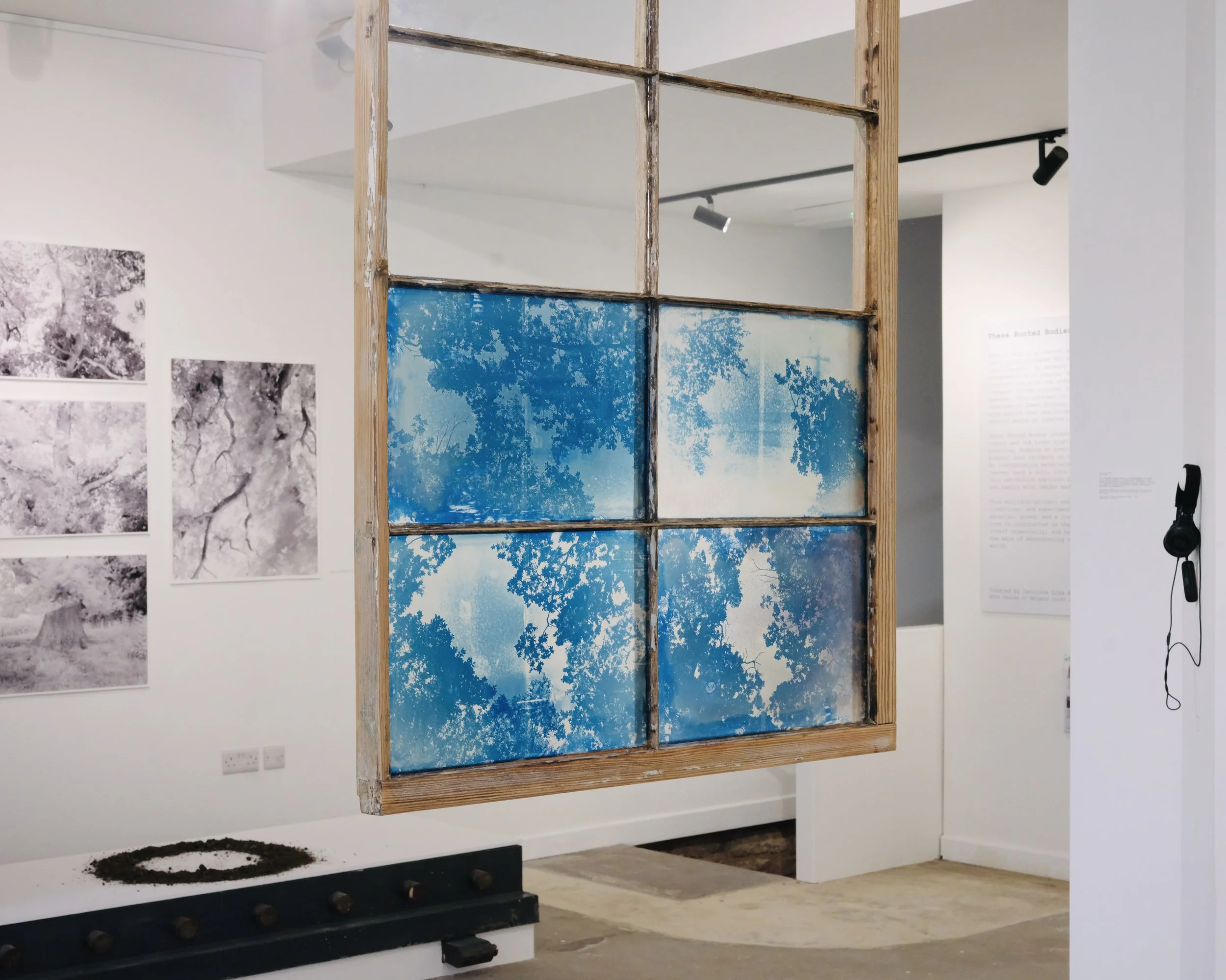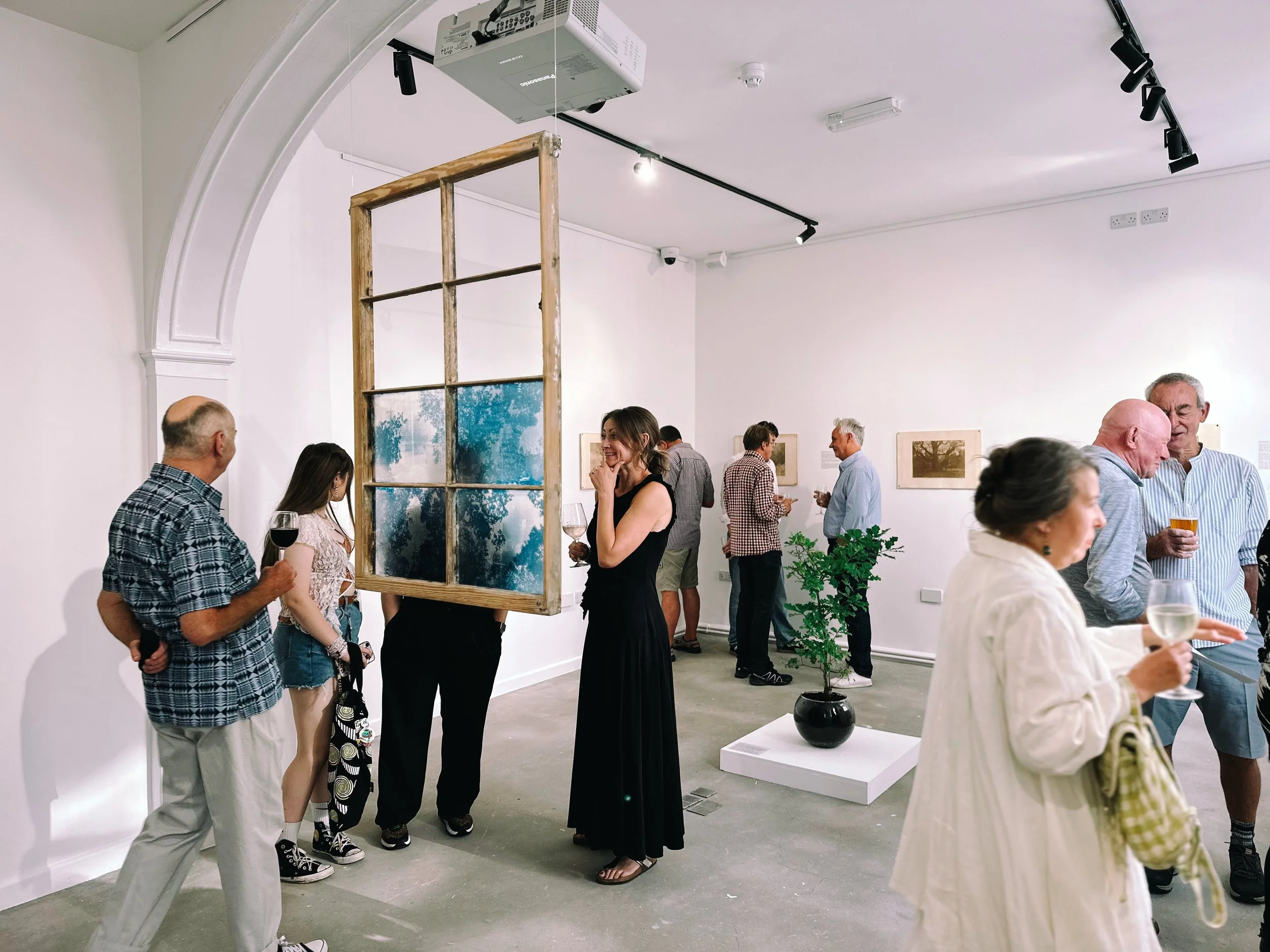Epha J. Roe is an English contemporary artist, writer, researcher and educator specialising in creative engagements with plants and the wider natural world.
ABOUT EPHA’S WORK
Drawing on growing scientific and philosophical engagements with plant intelligence and its effects upon creative practice, Epha’s work explores the connections between humans and the natural world with a particular interest in the cultural history of individual plants or plant species. This interest in the natural world also extends into the theoretical discipline of Queer Ecology, a form of engagement with the natural world that challenges dominant narratives of nature that place heterosexuality and binary gender at its centre.
Self-portrait with a mature oak tree which features as the subject of my Perceiving Phytochrome images, Hergest Croft Gardens , Kington, UK.
PROJECT HIGHLIGHT:
Arboreal Encounters:
Heritage Oaks in the English Landscape
This project contains six large-format photographic prints of English heritage oak trees as part of Epha’s practice-based PhD. The prints are made using the cyanotype process in combination with oak tannin as a dye, a chemical compound found within the leaves and bark of oak leaves. In short, the project explores how plants can, through the incorporation of their organic material, become part of the process of their own representation.



Publications
Alongside Epha’s artistic practice sits their research practice, having written several peer-reviewed articles for academic journals such as Antennae, the journal of nature in visual culture, and Plant Perspectives, a journal of interdisciplinary plant studies.
Their specialism, although primarily grounded in their artistic practice, currently spans photographic history and theory, the cultural history of the oak tree in England, artistic curatorial strategies, interdisciplinary and critical plant studies, queer ecology and queer theory.
Audience Feedback
-
This paper was written and published as part of Plant Perspectives, a journal of interdisciplinary plant studies. In it, I explore my practice-based research project Arboreal Encounters, a collection of tannin toned cyanotypes made with six heritage oak trees that form an element of my part-time, practice-based PhD at the University of Brighton, UK. It comprises of a brief history and background of the project before exploring how photographic practice might interact with and integrate notions of vegetal intelligence within artistic practice. By thinking of the production of Arboreal Encounters as if invitations to the trees to become part of the process of their own representation, I consider how such interactions might act symbolically as human-plant collaborations and how methods of thinking, as well as doing, may resist notions of the plant as commodity within artistic practice.es here
-
This paper was written and published as part of Antennae: A Journal of Nature in Visual Culture’s 63rd issue under the theme of ‘Queering Nature’. In it, I examine the presence of an oak tree within Virginia Woolf’s 1928 novel Orlando: A Biography, through the lens of queer ecology (a body of theory that means to understand nature, biology and sexuality without the presumption of heterosexuality as an ‘objective standard’). I argue that Woolf’s positioning of the natural world can be read as an example of queer ecological frameworks that reveal and consider not just the queer nature of the novel, but indeed the queerness of nature within it.
-
This paper was co-written with queer theorist Joe Jukes and published in Networking Knowledge: MeCCSA Journal for Postgraduate Research’s ‘Dreaming of Another Place’ issue. Drawing from our independent disciplines of queer theory and photographic practice, this paper examines the creative and curatorial practices, and the theoretical frameworks that structure them, in relation to Queer Constellations: Artistic Trespass and Rural Gay Histories, an art exhibition that took place at the Museum of English Rural Life (MERL) between July and September 2021. As the exhibition inhabited a museum whose focus is grounded in the practices and culture of agricultural life, our paper explores themes of ‘dis-orientation’ as a form that queerness takes within such spaces, asking the question: is there queerness in rural life? This is then reflected upon through my own photographic practice, asking how photographs can function as a form of blending of worlds.












